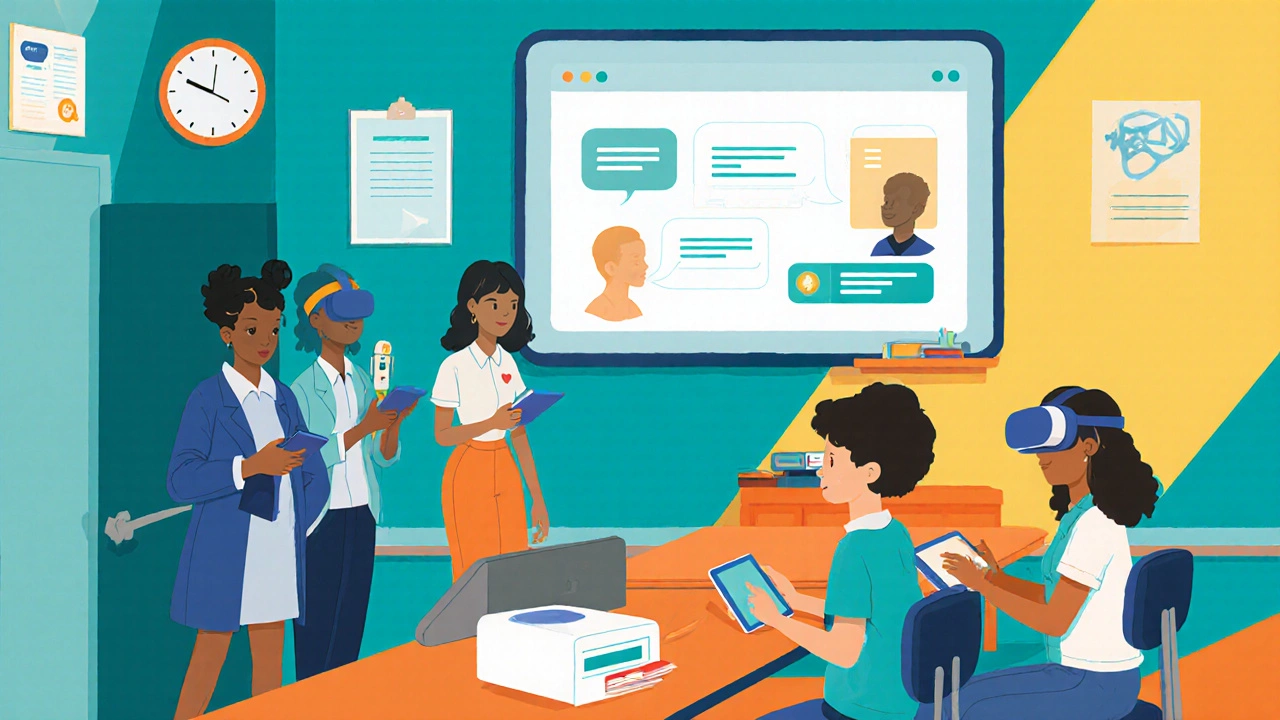Discover the world's biggest mental health philanthropists, their funding amounts, key initiatives, and how you can align with their impact-driven strategies.

- Created by: Lydia Carmichael
- Completed on: 9 Oct 2025
- Categories: Health and Wellness
Mental Health Philanthropists 2025 Explorer
Explore the top mental health philanthropists of 2025 and their funding priorities.
Did You Know?
The Bill & Melinda Gates Foundation allocated $300 million to mental health in 2025, focusing on youth suicide prevention and digital therapy platforms.
When you hear the term "philanthropy" it often conjures images of giant foundations, celebrity fundraisers, and corporate giving programs. In the mental‑health space, a handful of donors have poured more money than anyone else, shaping research, expanding services, and lobbying for policy change. Knowing who these people and organizations are can help advocates, nonprofits, and everyday supporters understand where influence is coming from and how to partner effectively.
Key Takeaways
- Bill & Melinda Gates Foundation, Bloomberg Philanthropies, and the Chan Zuckerberg Initiative are the three biggest funders of mental‑health projects in 2025.
- The Robert Wood Johnson Foundation and the Wellcome Trust each commit over $250million annually to mental‑health research and service delivery.
- Philanthropy is shifting from one‑off grants to long‑term, outcome‑based funding models.
- People who want to contribute can align with the strategic priorities of these top donors for greater impact.
Why Mental‑Health Philanthropy Matters Now
Global rates of anxiety and depression have risen sharply since the pandemic, and the World Health Organization estimates that one in eight people will experience a mental disorder this year. Governments alone can’t meet the demand for services, especially in low‑income regions. Private giving fills the gap, enabling breakthrough research, community‑based interventions, and stigma‑reduction campaigns. The scale of these contributions also sends a powerful signal that mental health is a societal priority, encouraging other institutions to follow suit.
Who the Biggest mental health philanthropists Are
Bill & Melinda Gates Foundation is a global grant‑making organization that, while best known for infectious‑disease work, has ramped up its mental‑health portfolio to $300million in 2025, focusing on youth suicide prevention and digital therapy platforms. Their funding often comes through multi‑year pilots that test scalable tech solutions in schools and workplaces.
Bloomberg Philanthropies (founded by Michael Bloomberg) channels more than $250million into mental‑health policy reform, especially in U.S. cities. Their “Mayor’s Challenge” grants give local governments the resources to integrate mental‑health crisis teams into emergency services.
Chan Zuckerberg Initiative (CZI) is a tech‑driven philanthropy that earmarked $200million for mental‑health research and community‑based care, emphasizing open‑science data platforms and AI‑enabled early‑warning tools. CZI’s tight partnership with academic labs accelerates the translation of neuroscience discoveries into clinical practice.
Robert Wood Johnson Foundation (RWJF) focuses on health‑equity, and in 2025 it directed $250million toward mental‑health equity initiatives, targeting racial minorities and rural populations. RWJF’s grant‑making model includes capacity‑building for local NGOs, ensuring the money stays in the community.
The Wellcome Trust is a UK‑based biomedical charity that pledged $220million to mental‑health research, with a strong emphasis on genomics and neuroimaging. Their "Broad Spectrum" program funds large‑scale cohort studies that aim to uncover biological markers for depression and anxiety.
John D. and Catherine T. MacArthur Foundation leverages its $1billion endowment to back innovative mental‑health delivery models, allocating $180million in 2025 to integrated primary‑care‑mental‑health pilots.
Minderoo Foundation (founded by Andrew and Nicola Forrest) focuses on youth mental health in Australia and Southeast Asia, committing $150million to school‑based counseling programs and peer‑support apps.
John Templeton Foundation supports interdisciplinary research at the intersection of mental health, spirituality, and meaning. Its 2025 grant budget includes $120million for longitudinal studies on resilience.

Side‑by‑Side Comparison
| Philanthropist | Primary Giving Platform | Total Mental‑Health Funding (USD) | Signature Initiative |
|---|---|---|---|
| Bill & Melinda Gates Foundation | Global grant‑making | $300million | Youth Suicide Prevention Lab |
| Bloomberg Philanthropies | City‑level policy grants | $250million | Mayor’s Challenge Crisis Teams |
| Chan Zuckerberg Initiative | Tech‑driven research | $200million | Open‑Science Mental‑Health Data Hub |
| Robert Wood Johnson Foundation | Health‑equity grants | $250million | Equitable Care for Underserved Communities |
| Wellcome Trust | Biomedical research funding | $220million | Broad Spectrum Neuroimaging Cohort |
| MacArthur Foundation | Innovative delivery models | $180million | Integrated Primary‑Care Pilots |
| Minderoo Foundation | Youth‑focused programs | $150million | School‑Based Counseling Network |
| John Templeton Foundation | Interdisciplinary research | $120million | Resilience & Meaning Longitudinal Study |
How Smaller Organizations Can Align With the Big Players
Large donors often prioritize collaboration, data sharing, and measurable outcomes. Smaller NGOs can increase their chances of receiving funds by:
- Mapping their program goals to the strategic pillars listed in the table above.
- Developing robust monitoring‑and‑evaluation frameworks that produce quantitative impact metrics.
- Joining consortia or coalitions that already have a seat at the table with these foundations.
- Submitting proposals that include a sustainability plan beyond the grant period.
- Leveraging open‑source tools (many are funded by CZI) to demonstrate technical readiness.
Emerging Trends in Mental‑Health Philanthropy
2025 sees three clear shifts:
- Outcome‑based financing: Instead of giving money upfront, donors are tying disbursements to specific health‑outcome targets, such as reduced suicide rates in a catch‑up period.
- Digital‑first interventions: AI chatbots, tele‑therapy platforms, and VR exposure therapy are getting a bigger slice of the budget because they scale quickly.
- Equity‑focused funding: More than half of new mental‑health grants now have explicit equity criteria, directing resources to Black, Indigenous, and People of Color (BIPOC) communities.
These trends suggest that future donors will look for data‑driven proof that a project can be reproduced at scale, especially in underserved settings.
Common Pitfalls to Avoid When Seeking Philanthropic Support
- Failing to align language with a donor’s published priorities - vague missions get filtered out quickly.
- Overlooking long‑term sustainability - foundations want to see how your work will survive after their money runs out.
- Neglecting rigorous evaluation - without solid baselines and KPIs, grant reviewers consider the risk too high.
- Missing the collaboration angle - many top philanthropists favor multi‑partner approaches over single‑entity projects.
Next Steps for Readers Who Want to Make an Impact
If you’re an individual donor, consider funneling contributions through one of the major foundations’ matching‑gift programs; a $50 gift can become $500 in impact. If you represent a nonprofit, start by downloading the public grant‑guidelines PDFs from the foundations listed above and tailor your proposal to the exact language they use. Finally, stay updated on the annual reports of these philanthropists - they reveal where funding is shifting next year.
Frequently Asked Questions
Which philanthropist focuses most on youth mental health?
The Minderoo Foundation dedicates the largest proportion of its $150million budget to school‑based counseling and peer‑support apps, making it the top donor for youth‑focused initiatives.
How does outcome‑based financing work in mental‑health grants?
Donors set specific targets (e.g., a 10% drop in emergency‑room visits for mental‑health crises). Funds are released in stages as the grantee demonstrates progress toward those targets, ensuring accountability and impact.
Can small NGOs apply directly to these large foundations?
Yes, but they have higher success rates when they partner with larger organizations or consortia that already have a working relationship with the foundation. Demonstrating alignment with the foundation’s strategic pillars is crucial.
What is the biggest single‑year mental‑health grant ever awarded?
In 2024, the Bill & Melinda Gates Foundation announced a historic $500million multi‑year commitment to digital mental‑health solutions, the largest single allocation to date.
Where can I find up‑to‑date data on mental‑health philanthropy?
All major foundations publish annual reports on their websites. Additionally, the nonprofit data platform GuideStar aggregates grant‑making data for U.S. donors, while the OECD’s Development Assistance Committee tracks international giving.